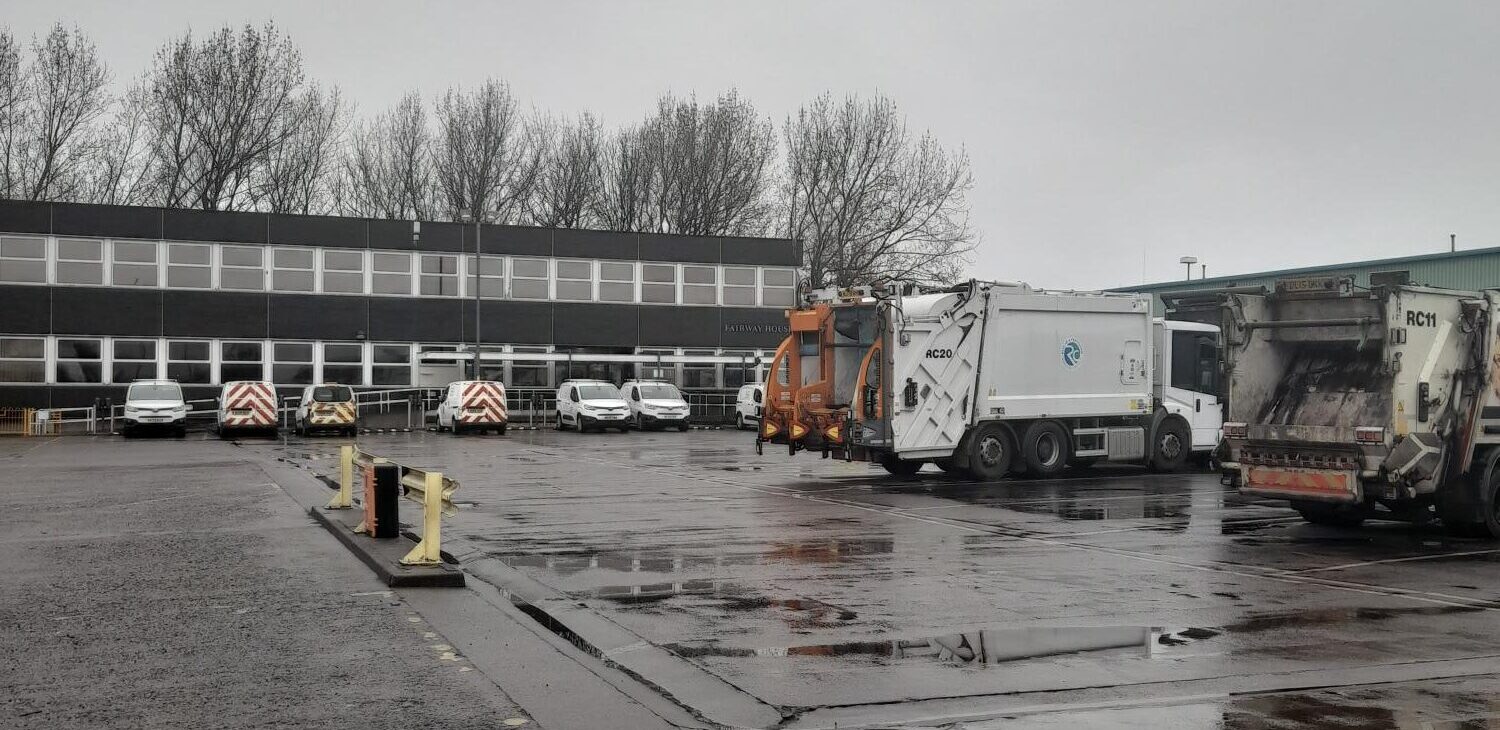How Gwinnett County Saves Money with FleetFocus and FuelFocus
Home to over 750,000 residents, Gwinnett County, Georgia, has been one of America’s fastest-growing counties for the past twenty years. Located just thirty miles northeast of Atlanta, Gwinnett County is ideally located for residents who wish to enjoy the city life without missing out on the scenic beauty of rural Georgia, including the recreational haven Lake Lanier.
The Gwinnett County Fleet Management Division is an internal service organisation that is solely responsible for providing the most efficient and cost-effective support, maintenance, and operation of all Gwinnett County vehicles, associated equipment, and fueling sites. Gwinnett County’s fleet management department owns and maintains over 2,700 vehicles utilised for road maintenance, parks and public services, police protection and other government business.
In addition to the vehicles and equipment in Gwinnett County’s fleet, Gwinnett County provides fuel for over 5,500 vehicles including the Board of Education, the Health Department, Gwinnett Medical Center, the Gwinnett Library System and the cities located inside Gwinnett County.
The Fleet Division is a customer-focused organisation whose staff believes in providing dedication, efficiency, good stewardship, innovation and integrity at all times in dealing with their customers and County fleet assets. These core values allow the Fleet Division to continue to deliver a high quality of customer satisfaction.
"Seeing the reports creates a positive level of competition in the shop and keeps the techs motivated to do their best."
Michael Lindsey
Gwinnett Fleet Management Division has depended on AssetWorks’ FleetFocus fleet management software for over thirteen years. In recent years the county has upgraded to the browser-based version of FleetFocus and implemented AssetWorks’ fully integrated automated fuel management system, FuelFocus. FleetFocus and FuelFocus allow Gwinnett County fleet managers, supervisors and technicians to access all their fleet and fuel information on a single database and provides them with valuable tools to help with service requests, work order management, workshop scheduling, utilisation, and inventory management.
Increasing productivity and tracking labour
Maintenance management systems are only as good as the data that is entered into them, so it’s important to make sure that the technicians who use the system on a daily basis find it intuitive and easy-to-use. Gwinnett County fleet technicians use FleetFocus’ Shop Portal that gives them a “one-stop shop” for all the information they need. When they log into FleetFocus, technicians have access to all the work orders assigned to them, with easy to view history, warranty information and analytics. FleetFocus provides real-time labour capture recording actual time spent on a task as it is done. Indirect labor or general time that cannot be billed to a specific work order is also measured in real-time, allowing for true analysis of ‘wrench’ vs ‘non-wrench’ time.
Gwinnett County uses this accurate real-time information to create and monitor productivity reports. Productivity can be tracked by almost any subset of data; by shop, technician, task, vehicle class or by vehicle type. This information can also be tracked and compared against industry standards, such as the NAFA (National Association of Fleet Administrators) standards, allowing Gwinnett County to measure technicians productivity vs. national standard. These productivity reports are then shared with technicians and utilised by supervisors in developing continuous education programs.
“We are not a flat rate shop, so there is not always the incentive for a technician to work harder or faster on a specific job. Seeing the reports creates a positive level of competition in the shop and keeps the techs motivated to do their best,” remarks Michael Lindsey, Division Director.
Managing and Reducing Fuel Costs
Fuel control can be a challenge for all public and private agencies and is a key driver in operational costs for any fleet organisation. Gwinnett County’s Fleet consumes an average of 500,000 gallons of fuel per month. With so much fuel consumption, it is imperative to monitor the inventory levels and control fueling activity to ensure that only authorised users are fueling up at the county’s eleven fuel sites.
The county relies on AssetWorks’ FuelFocus to manage all fuel transactions county-wide. FuelFocus is an Automated Fuel System (AFS) which supports continuous, real-time fuel management over virtually any communication platform and integrates seamlessly with the county’s FleetFocus software application in real-time. At each fueling site, a FuelFocus ICU (Island Control Unit) validates and authorises the user and the vehicle using Proximity Key technology.
Additionally, approximately 146 vehicles in Gwinnett County’s fleet are equipped with radio frequency (RF) vehicle units, providing for hands free vehicle validation. This eliminates the error of entering the incorrect odometer readings and results in optimal data integrity to get a more accurate measurement of vehicle performance, such as miles per gallon, cost per mile, and miles driven. At the time of fueling a meter reading is taken that transmits directly into the FleetFocus maintenance system. Keeping up-to-date meter readings helps ensure that the vehicle is on the correct PM (Preventive Maintenance) schedule. The real-time integration with FleetFocus helps the county monitor and track the usage of each vehicle. Fuel cost reports track vehicle and fleet mileage-per-gallon, cost per mile, cost per hour and many other fuel related data points.
When a 3% reduction in fuel expenditures was mandated, Gwinnett County was able to reach this goal through the tools provided by the combined solution of FleetFocus and FuelFocus. FuelFocus provides the security features to ensure that the county is only fueling authorised vehicles, which reduces waste and abuse. FleetFocus’ real-time reporting and tracking tools enable Gwinnett County to better manage maintenance processes that keep vehicles running optimally and driver behaviours that improve fuel efficiency.
An essential component of the county’s carbon footprint reduction strategy involves reducing the vehicle idling which will lessen the amount of fuel the county consumes. The county is able to audit and improve vehicle idling utilising FleetFocus reports.
Saving the Taxpayers Money
When a department needs a new vehicle, they submit a request to the fleet management department. Division Director Michael Lindsey ensures that his department manages these purchasing decisions through proven facts. By using FleetFocus’ extensive reporting capabilities, the fleet staff is able to track the cost of a vehicle from acquisition to disposition. They are able to recommend the most cost-effective vehicle option to the requesting department. If that department has a specific need or desire that isn’t met by the fleet department’s recommendation, the department is required to submit justification for the higher cost vehicle.
“When we make a purchasing decision, we are able to compare analysis on several vehicles before the purchase happens. This allows us to know that we are continuing to make good buying decisions. Knowing the lifecyle costs also allow us to know when the useful life of the vehicle has passed and when it’s simply costing the county too much money to maintain,” reports Lindsey.
Because FleetFocus stores all the vehicle and maintenance data on a single database, information is easily extracted. Fleet managers find it useful for the types of daily decisions such as work order management, labour scheduling, equipment availability and the purchasing decisions that Lindsey mentioned. However, part of FleetFocus’ true power lies in the data that can be used for long term planning.
Through careful analysis of lifecycle costs, historical data and detailed usage information, Lindsey deduced that a significant percentage of the fleet was being underutilised. Gwinnett County was able to reduce the fleet by 8%, saving the county hundreds of thousands of dollars per year in maintenance, operations and fuel costs. Lindsey was able to do so by using data pulled from FleetFocus:
- Analysed usage data for vehicles and departments – Some vehicles were being driven far less than the minimum requirement of 6,000 miles per year. The data from FleetFocus supported the decision to move these vehicles into a department where they would be better utilised or remove these vehicles from the county fleet altogether.
- Instituted a “No Take-Home Vehicle” policy – This was another huge cost savings because it ensured that the vehicle was being used for county business only. First responders and police with night or early patrols are still allowed to take home their vehicles because it is critical to their job.
Through their diligent lifecyle cost analysis, the fleet department makes decisions about when the vehicle has exceeded its useful life for the county. Through actual data instead of intuition, smart decisions are made about which vehicles to be retired. In 2006, Gwinnett County began selling these retired vehicles on eBay vs. auctions. Since the county began selling its retired vehicles on eBay, it has increased profits by 35% and realised well over $1 million in revenue. This money goes back into the fleet fund for the county to purchase additional vehicles. For a county that self-finances the purchase of their vehicles, this translates into a tremendous service for the Gwinnett County taxpayers.












